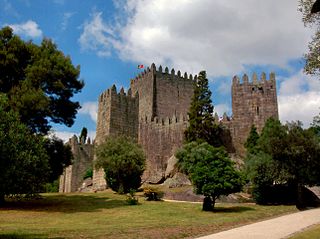
The Castle of Guimarães is the principal medieval castle in the municipality Guimarães, in the northern region of Portugal. It was built under the orders of Mumadona Dias in the 10th century to defend the monastery from attacks by Moors and Norsemen.

Castle of Braga is a historical fortification and defensive line encircling the city of Braga. While, in fact, the only remains of this structure are the various gates and towers along its perimeter, the main keep tower, located in the civil parish of São João do Souto, is the only true remnant of the medieval castle.

The Castle of Carrazeda de Ansiães, normally shortened to Castle of Ansiães, is a medieval castle in the civil parish of Lavandeira, municipality of Carrazeda de Ansiães of Portugal.
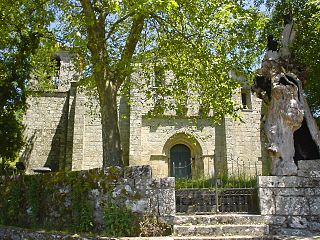
The Church of Santo André is a Romanesque and Baroque era Portuguese religious building located in the civil parish of Fiães, municipality of Melgaço, in the northern Portuguese district of Viana do Castelo.

The Church of São Miguel do Castelo is a medieval church in the civil parish of Oliveira do Castelo, municipality of Guimarães, in the northern district of Braga of Portugal. The church is emblematically linked to the foundation of the Portuguese Kingdom. Legend suggests that it was the sight of the baptism of the young Afonso Henriques. These claims are contradictory, since the date of the church's founding has been suggested to be during the reign of Afonso II of Portugal.

The Castle of Aljezur is a medieval castle founded in the parish of Aljezur, in the municipality of the same name overlooking the Aljezur River. Excavations in the castle have discovered that the location was occupied during the Bronze and Iron Ages, while the parade grounds, habitational structures, and two silos date to the 12th and 13th centuries.
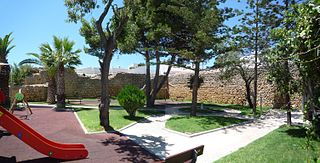
The Castle of Alvor is a medieval castle in the civil parish of Alvor, in the Portuguese district of Faro: considered to be a significant military monument associated with the nearby Castle of Silves.

The Bridge of Prozelo is a bridge in the civil parish of Ferreiros, Prozelo e Besteiros, municipality of Amares, in the Portuguese district of Braga, that crosses the Cávado River.
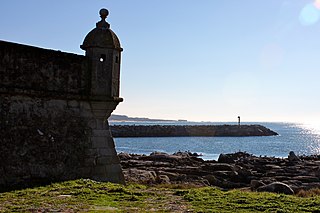
The Fort of Lagarteira is a medieval fort in the civil parish of Vila Praia de Âncora, municipality of Caminha in the Portuguese Norte, classified as a Property of Public Interest.

The Castle of Folgosinho, is a medieval castle in the civil parish of Folgosinho, municipality of the Gouveia in the district of Guarda in the Centre region of Portugal.

The Castle of Vidigueira is a castle in the civil parish of Vidigueira in the municipality of Vidigueira in the Portuguese subregion of Baixo Alentejo. Although constructed in the first half of the 15th century, it is more commonly associated with the first of the Counts of Vidigueira: Vasco da Gama.

The Church of Santa Maria de Abade de Neiva is the parochial church of the civil parish of Abade de Neiva, in the municipality of Barcelos, Portuguese district of Braga.
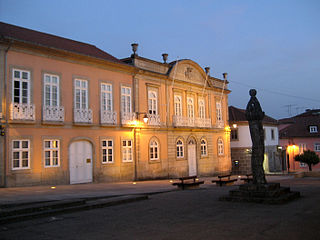
The Pillory of Arcos de Valdevez is a 15th-century sculpted stone column with symbolic political, administrative and judicial significance, located in the civil parish of Arcos de Valdevez (Salvador), Vila Fonche e Parada, municipality of Arcos de Valdevez.
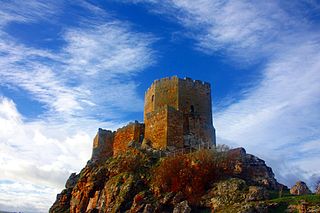
The Castle of Algoso is a medieval castle in the civil parish of Algoso, Campo de Víboras e Uva, municipality of Vimioso, in the Portuguese district of Bragança. The castle of Algoso is one of the most important medieval fortifications in the eastern Trás-os-montes, related with the battles of Leonese succession, the tentative policies of the independent Portuguese monarch and the important religious commandery of the Knights Hospitaller that established their roots in 1224.

The Castle of Mirandela is a medieval castle in the civil parish of Mirandela, municipality of the same name, in the Portuguese district of Bragança.

The Castle of Vila Nova de Cerveira is a medieval castle located in the civil parish of Vila Nova de Cerveira e Lovelhe, in the municipality of Vila Nova de Cerveira, Portuguese Viana do Castelo.
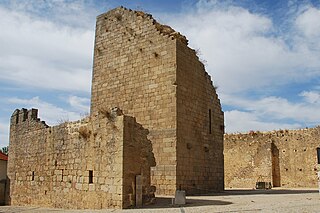
The Castle of Miranda do Douro is a Portuguese medieval castle in the civil parish of Miranda do Douro, in the municipality of the same name, in the district of Bragança.

The Castle of Castelo Melhor is a medieval castle located in the civil parish of Castelo Melhor, in the municipality of Vila Nova de Foz Côa, Portuguese Guarda. The castle is one of the best examples of secondary medieval fortresses, erected in one of the more peripheral zones of the peninsular kingdoms.

The Castle of Mogadouro is a medieval castle located in the civil parish of Mogadouro, Valverde, Vale de Porco e Vilar de Rei, in the municipality of Mogadouro, Portuguese district of Bragança.

The Castle of Castelo Bom is a medieval castle in the civil parish of Castelo Bom, municipality of the Almeida in the district of Guarda in the Centre region of Portugal.

























